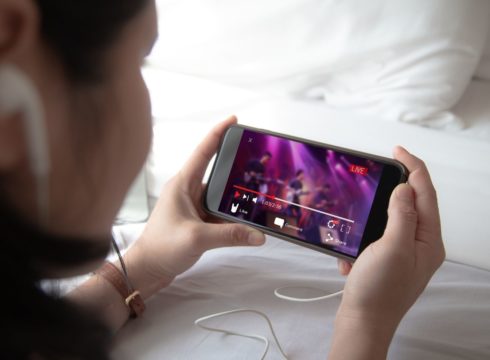SUMMARY
The global average of time spent on online video had been an average of 1 hour per day
In India, the average viewing is at 5.27 hours per day, with 97.8% of respondents suggesting that they use video to communicate with family and friends
India has one of the youngest demographics in the world, and this could influence several decisions
Inc42 Daily Brief
Stay Ahead With Daily News & Analysis on India’s Tech & Startup Economy
Ever since the Covid-19 pandemic struck the world this March, people have been spending excessive amounts of time at home. Not only are they working from home, but they are also learning new skills and keeping themselves entertained through a plethora of internet-based content. Be it OTT platforms, video hosting websites like YouTube, or video conferencing tools and software for hosting webinars, internal meetings, the past seven months have transformed the way we function.
The sudden rise in real-time streaming needs the requisite infrastructure to handle the demand for high-quality video. Content Delivery Networks (CDNs) facilitate superior streaming through WebRTC (web real-time communication), which can be enabled on browsers such as Chrome, Safari, Firefox, etc., to improve video clarity, connectivity, and reach for users.
A recent report by Limelight Networks called “How Video Is Changing the World- 2020” clearly indicates the paradigm shift in online activity during the pandemic. The changes are visible across the spectrum, with social media and video calling activity, home entertainment, and work-related video services all seeing an uptick in usage. The global average of time spent on online video had been an average of 1 hour per day, according to the State of Online Video 2019 study.
It has increased drastically during the pandemic to more than 4 hours per day, a four-fold increase in overall activity. In India, the average viewing is at 5.27 hours per day, with 97.8% of respondents suggesting that they use video to communicate with family and friends. Indians’ usage of video streaming is the highest in the world, with work from home options being offered to employees by their organizations qua-industry. About 93% of Indian working professionals surveyed suggested that their employers are allowing work from home as a consequence of Covid-19, which is way above the global average of 69%.
It goes to show the speed with which companies need to meet the demands of the working population. India has one of the youngest demographics in the world, and this could influence several decisions. It is prudent that organizations swiftly prepare for the significant increase in traffic, as an inability to deliver top quality video streaming services to customers could lead to a loss of face and affect brand image. Investing in quality streaming through CDNs could transform the landscape for emerging business, as up and coming OTT platforms are already witnessing a surge in viewership.
Efforts need to go into delivering uninterrupted high definition viewing experiences to keep up the momentum. The devising of new content delivery strategies must be in line with the current realities brought upon us by the Covid-19 crisis, customers’ consumption patterns, and reliance on CDNs that offers content monetization opportunities as well as robust data analytics to conduct future planning.
Further to this, the post-Covid scenario, new local OTT platforms, the interest generated in vernacular content, and the increased accessibility to the internet & smartphones across developing economies must influence the content delivery strategy. Service providers who stay on top of these issues will excel in their business by making high-quality video streaming available for their customers.
Note: We at Inc42 take our ethics very seriously. More information about it can be found here.


